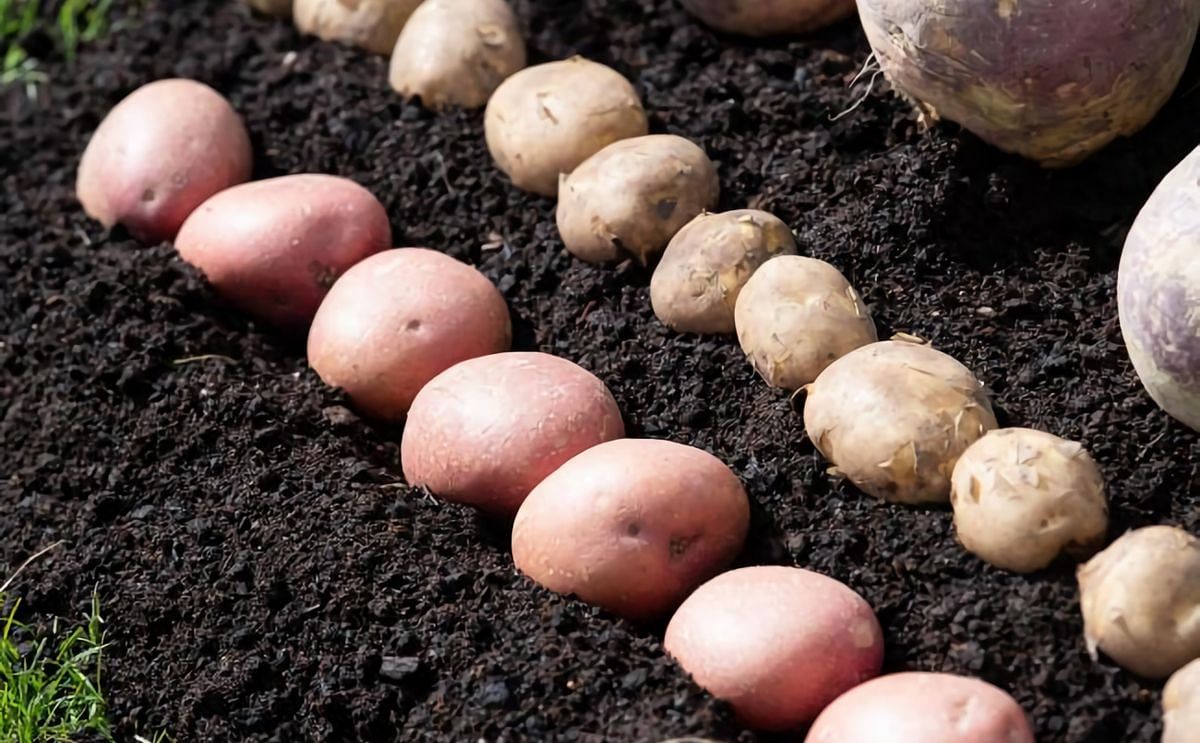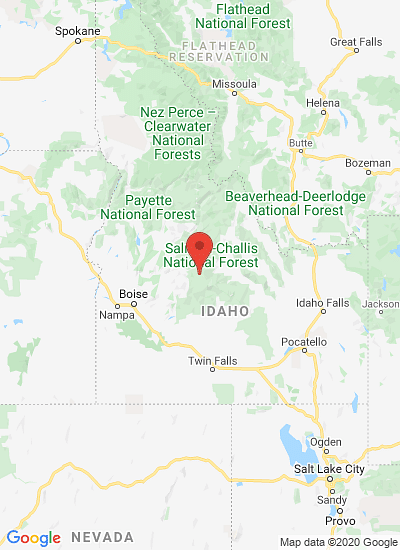Seed Potato Testing
Primaire tabs
Idaho evaluating alternate method of dormancy testing for Seed Potatoes

University of Idaho doctoral student Lisa Tran’s dissertation has the potential to transform how Idaho’s seed potato certification authority does business.
The Idaho Crop Improvement Association (ICIA) currently implements post-harvest testing by conducting an elaborate Winter Grow Out in Hawaii, planting grower-submitted tuber samples taken from seed potato lots entered for certification and harvesting a leaf from each plant to send back to Idaho Falls for laboratory testing.
Tran is investigating the feasibility of replacing the current Grow Out process with a dormant tuber test that would be conducted at ICIA’s Idaho Falls facility.
In addition to averting the program from conducting the annual post-harvest test overseas, which comes with its own challenges, direct tuber testing would provide results to growers months earlier, helping them make timely decisions about markets for their seed lots.
Lisa Tran:
Lots that exceed set thresholds of infected seed are not eligible for recertification and growers cannot replant them to expand their seed supply, with some minor exceptions.
In Hawaii, crop experts visually survey test plots for symptoms of PLRV and send foliage from symptomatic plants for confirmation testing by Tran and her staff.
They also send a leaf sample from every plant to Idaho Falls for PVY testing due to PVY’s asymptomatic or mild expression in certain potato cultivars. Tran’s crew uses enzyme-linked immunosorbent assay testing (ELISA) to test for both pathogens.
Tubers harbor lower viral concentrations than foliage and ELISA is not sensitive enough to accurately detect low PVY levels via direct tuber testing. Furthermore, a disadvantage of ELISA is that it can’t be used to test for multiple pathogens simultaneously.
Tran is currently evaluating commercial test kits that use a more sensitive laboratory test capable of screening for multiple pathogens at once, called quantitative polymerase chain reaction (qPCR).
Thus far, she’s found direct tuber testing using qPCR produces comparable results for detecting PVY and PLRV as the current Winter Grow Out protocol using ELISA testing.
It’s generally more expensive to conduct qPCR compared with ELISA, but the laboratory already utilizes qPCR for testing of other pathogens. Part of Tran’s research will also involve figuring out the logistics of converting lab operations to address obstacles associated with seed certification.
For example, the program currently tests up to 900 seed lots each year with most seed lots submitting 400 tuber samples for the Winter Grow Out – an enormous number of samples that need to be processed in a timely manner.
The staff would have to shift from handling and testing 400 leaves to 400 tubers, which is an entirely different processing method, if it switches to direct tuber testing.
Lisa Tran:
Lisa Tran:
Alexander Karasev:
In recognition of Tran’s work to benefit the potato industry, she was recently awarded $1,100 through the Joe and Terri Guenthner Graduate Scholarship, an endowment honoring the career of Joe Guenthner, who was a U of I Extension economist for 33 years and remains active in the university as a professor emeritus.
The scholarship is open to full-time graduate students in the College of Agricultural and Life Sciences who wish to pursue a career in the potato industry.
Tran’s project has received funding from a USD 5.8 million USDA-NIFA-SCRI grant, under award No. 2020-51181-32136. The project, "Development and Adoption of Direct Tuber Testing to Enhance Marketing Potential of Idaho Seed Potato," also received USD 130,000 in 2021 in USDA-SCBG funding through ISDA.
The Idaho Crop Improvement Association (ICIA) currently implements post-harvest testing by conducting an elaborate Winter Grow Out in Hawaii, planting grower-submitted tuber samples taken from seed potato lots entered for certification and harvesting a leaf from each plant to send back to Idaho Falls for laboratory testing.
Tran is investigating the feasibility of replacing the current Grow Out process with a dormant tuber test that would be conducted at ICIA’s Idaho Falls facility.
In addition to averting the program from conducting the annual post-harvest test overseas, which comes with its own challenges, direct tuber testing would provide results to growers months earlier, helping them make timely decisions about markets for their seed lots.
Lisa Tran:
"If I am able to achieve what the industry has been expressing an interest in, it’s going to be a big change for the certification agencies if they decide to move in this direction – almost like entering a new era."ICIA uses the Winter Grow Out to screen seed potato lots for potato leafroll virus (PLRV) and potato virus Y (PVY), as well as assess chemical damage and confirm variety identity and purity.
Lots that exceed set thresholds of infected seed are not eligible for recertification and growers cannot replant them to expand their seed supply, with some minor exceptions.
In Hawaii, crop experts visually survey test plots for symptoms of PLRV and send foliage from symptomatic plants for confirmation testing by Tran and her staff.
They also send a leaf sample from every plant to Idaho Falls for PVY testing due to PVY’s asymptomatic or mild expression in certain potato cultivars. Tran’s crew uses enzyme-linked immunosorbent assay testing (ELISA) to test for both pathogens.
Tubers harbor lower viral concentrations than foliage and ELISA is not sensitive enough to accurately detect low PVY levels via direct tuber testing. Furthermore, a disadvantage of ELISA is that it can’t be used to test for multiple pathogens simultaneously.
Tran is currently evaluating commercial test kits that use a more sensitive laboratory test capable of screening for multiple pathogens at once, called quantitative polymerase chain reaction (qPCR).
Thus far, she’s found direct tuber testing using qPCR produces comparable results for detecting PVY and PLRV as the current Winter Grow Out protocol using ELISA testing.
It’s generally more expensive to conduct qPCR compared with ELISA, but the laboratory already utilizes qPCR for testing of other pathogens. Part of Tran’s research will also involve figuring out the logistics of converting lab operations to address obstacles associated with seed certification.
For example, the program currently tests up to 900 seed lots each year with most seed lots submitting 400 tuber samples for the Winter Grow Out – an enormous number of samples that need to be processed in a timely manner.
The staff would have to shift from handling and testing 400 leaves to 400 tubers, which is an entirely different processing method, if it switches to direct tuber testing.
Lisa Tran:
"The technology is there but whether it can be adapted to the larger scale we’re working on is up for debate."If the industry ultimately decides to change testing methods, Tran, herself, will take the lead in implementing the changes in Idaho. In addition to being a graduate student, Tran is the manager of the ICIA seed certification laboratory in Idaho Falls.
Lisa Tran:
"I feel who better to do this research than the position I’m in as ICIA lab manager because I know every single detail that goes into the winter testing."Tran started the project in the summer of 2022 with funding from USDA’s National Institute of Food and Agriculture and a USDA Specialty Crop Block Grant administered by the Idaho State Department of Agriculture. Tran’s major advisor is Alexander Karasev, a University Distinguished Professor of virology.
"Starting this Ph.D project allows me to have one foot on the research side and the other foot on the certification side, allowing me to tailor protocols to ICIA’s infrastructure and needs."
Alexander Karasev:
"Growers need to know right away which lot is clean and which one is not clean. You need to understand the economics as soon as possible."Karasev was also her master’s advisor when she studied detection methodology for two other viruses affecting potatoes – potato moptop virus and tobacco rattle virus.
In recognition of Tran’s work to benefit the potato industry, she was recently awarded $1,100 through the Joe and Terri Guenthner Graduate Scholarship, an endowment honoring the career of Joe Guenthner, who was a U of I Extension economist for 33 years and remains active in the university as a professor emeritus.
The scholarship is open to full-time graduate students in the College of Agricultural and Life Sciences who wish to pursue a career in the potato industry.
Tran’s project has received funding from a USD 5.8 million USDA-NIFA-SCRI grant, under award No. 2020-51181-32136. The project, "Development and Adoption of Direct Tuber Testing to Enhance Marketing Potential of Idaho Seed Potato," also received USD 130,000 in 2021 in USDA-SCBG funding through ISDA.
Like to receive news like this by email? Join and Subscribe!
Get the latest potato industry news straight to your WhatsApp. Join the PotatoPro WhatsApp Community!
Uitgelichte Bedrijven
Sponsored Content
Sponsored Content
Sponsored Content
Sponsored Content








